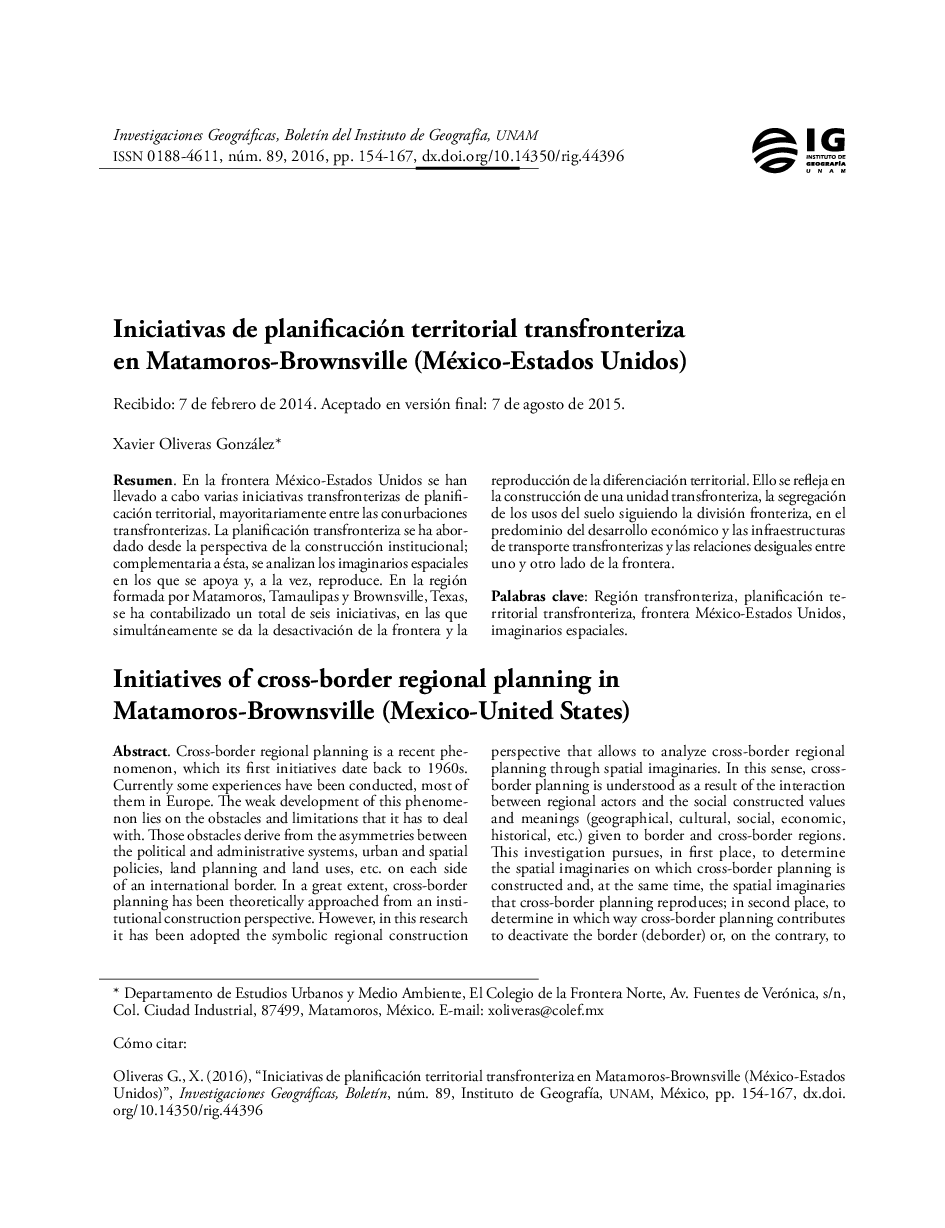| Article ID | Journal | Published Year | Pages | File Type |
|---|---|---|---|---|
| 7474552 | Investigaciones Geográficas, Boletín del Instituto de Geografía | 2016 | 14 Pages |
Abstract
In the Mexico-United States border region some initiatives of this kind have been carried on, particularly between cross-border conurbations (Tijuana-San Diego, Ciudad Juárez-El Paso, etc.). One cross-border conurbation has been selected: Matamoros, Tamaulipas and Brownsville, Texas. There six initiatives have been carried on since late 1960s: Urban development bi-national planning program (1968), Binational 2020 Land Use and Transportation Plan (1997-99), Binational Transportation Focus Group (2002), Laguna Madre Binational Initiative (1998-2000), Bi-National Economic Development Zone (BI-NED Zone) (2011-â¦), and Lower Rio Grande Valley-Tamaulipas Border Master Plan (2013). All of them present some particularities based on their objectives and function, participant local and regional actors, the planning phase, and their results. Despite differences, they show a common feature: the existence of a shared set of spatial topics of interest, like transportation and infrastructures, land uses in adjacent border spaces, and regional development. These six initiatives are not isolated from the ongoing local, national and binational spatial debates, but they have been carried on in parallel with some other binational processes (such as NAFTA and NAAEC), planning and construction of new international bridges, elaboration of urban plans in one or both cities, and confluence with conjectural economic development opportunities. In all of these initiatives the border is deactivated and, simultaneously, the spatial differentiation is reproduced. That can be observed in the objects and spatial dynamics that are subject to planning, the spatial distribution of land uses across the boundary, and the objectives and participant actors of cross-border planning processes. Finally, four main spatial imaginaries have been identified: the “other side” and the cross-border dimension; economic development and crossborder transportation infrastructures; the divergent spatial distribution of land uses according to the boundary; and the United States as a main reference.
Related Topics
Social Sciences and Humanities
Social Sciences
Geography, Planning and Development
Authors
Xavier Oliveras González,
